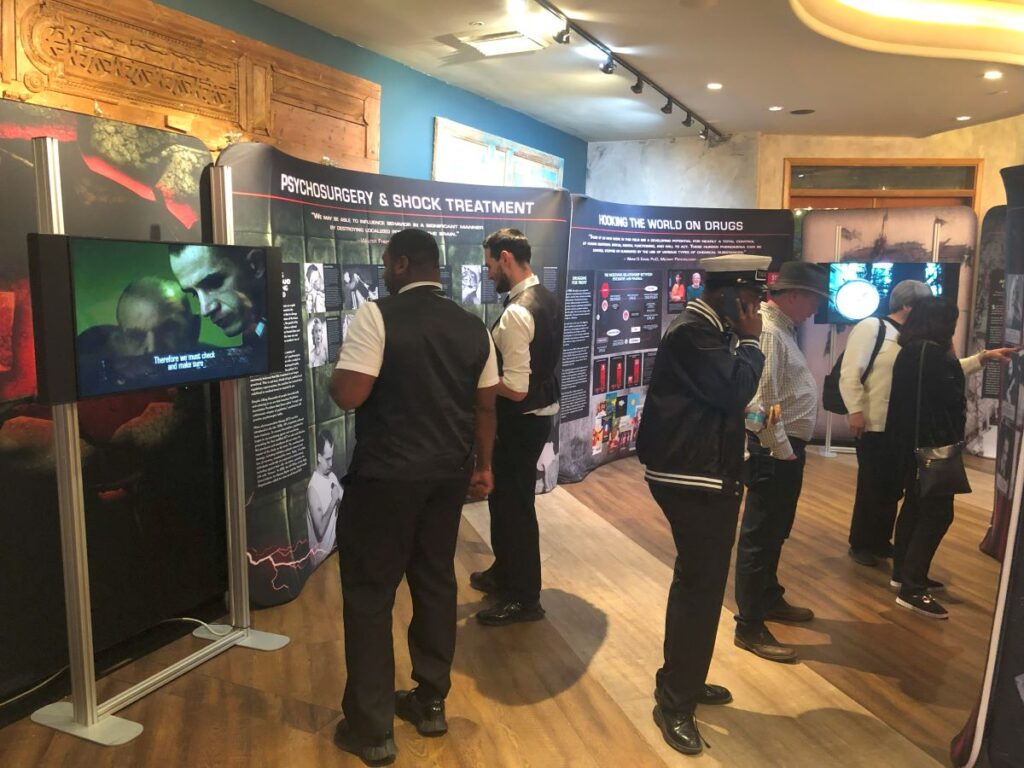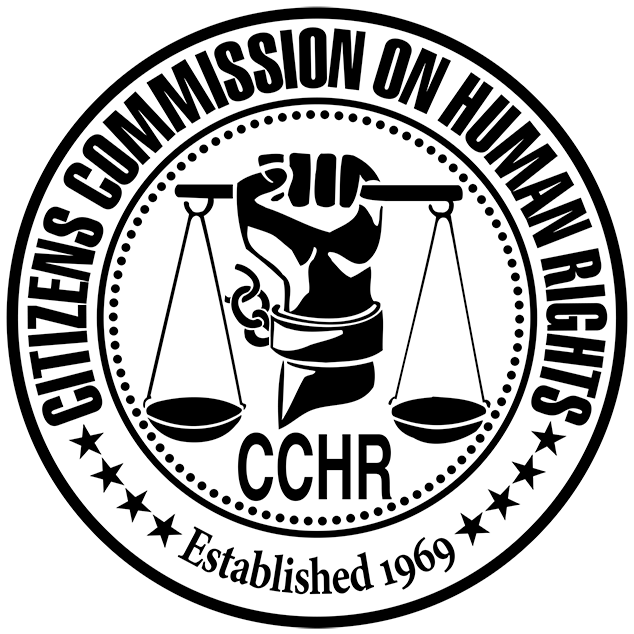Psychiatrists perform electroshock on patients, especially women and older people, despite risks of brain damage and permanent memory loss and no conclusive proof of effectiveness, experts say. Even young children are electroshocked in the U.S.
Calling for a ban on the psychiatric procedure of electroconvulsive therapy (ECT, or “electroshock”), protesters demonstrated Thursday against psychiatrists attending the annual meeting of the American College of Psychiatrists (ACP) in New Orleans. The protest was organized by the Citizens Commission on Human Rights (CCHR), a mental health watchdog organization that has long advocated for laws to ban ECT.
Psychiatrists administering electroshock generate an estimated $3 billion in revenue annually, despite significant risks to their patients of permanent memory loss and brain damage, as well as no conclusive proof of effectiveness, according to experts. CCHR calls on the ACP to actively take a stand against the procedure.
The protest was followed by the opening of CCHR’s traveling exhibit, “Psychiatry: An Industry of Death,” at a nearby venue. The exhibit documents the history of psychiatric fraud and abuse up to present day.

ECT is a procedure in which psychiatrists shoot up to 460 volts of electricity through brain tissue, intentionally causing seizures that can last up to 30 minutes. It is reportedly used mostly on women and the elderly.
Psychiatrists still cannot explain how this procedure is supposed to work to alleviate depression or other behavioral issues. The voltage and number of sessions used is a matter of trial and error. While the use of ECT is not tracked across the U.S., a conservative estimate is that over 100,000 Americans are electroshocked annually.
According to the U.S. Food and Drug Administration (FDA), electroshock can cause brain damage, cognitive impairment, permanent memory loss, prolonged or persistent seizures, worsening psychiatric symptoms, cardiovascular complications (including heart attacks), breathing complications and death.
A new study has provided additional evidence of memory loss, finding that 61% of adults and 69% of teenagers who received electroshock suffered memory impairment after the procedure.
However, patients are not always fully informed of these risks before consenting to the procedure, and psychiatrists can get a court order to perform ECT against a patient’s will.
“Patients should not be exposed to such extremely serious, even life-threatening risks just because their psychiatrists don’t know what else to do,” said Anne Goedeke, president of the National Affairs Office of the Citizens Commission on Human Rights. “The procedure should be banned outright.”
The World Health Organization (WHO) and the Office of the United Nations High Commissioner for Human Rights (OHCHR) recently issued guidance calling on U.N. member nations to ban all forced electroshock. “International human rights standards clarify that ECT without consent violates the right to physical and mental integrity and may constitute torture and ill-treatment,” the guidance says.
WHO and OHCHR also oppose any use of ECT on children and call for laws to be enacted to ban it. In the U.S., reports required to be filed in some states on the use of ECT reveal that children 5 years old and younger are given electroshock.
Although psychiatrists recommend electroshock for depressed patients who may be at risk for suicide, recent research has found no evidence that ECT is any more effective than sham ECT (general anesthesia but not the electric shock). Patients who received treatment with ECT had no lower risk for suicide than mental health patients who did not.
John Read, Ph.D., a professor of psychology, Irving Kirsch, Ph.D., associate director of the Program in Placebo Studies at Harvard Medical School, and psychologist Laura McGrath, Ph.D., conducted a comprehensive analysis of prior studies on ECT. They found that the quality of those studies was so poor that nothing could be concluded about any effectiveness of the procedure.
“There is no evidence that ECT is effective for its target demographic – older women, or its target diagnostic group – severely depressed people, or for suicidal people, people who have unsuccessfully tried other treatments first, involuntary patients, or adolescents,” they concluded.
Psychiatrists performing electroshock can greatly increase their income. It has been estimated that a psychiatrist spending just a few hours a week to do 20 ECT procedures can bring in an additional $300,000 per year. Electroshock rakes in an estimated $3 billion a year in the U.S. alone.
CCHR’s documentary, Therapy or Torture: The Truth About Electroshock, warns consumers about the serious risks of ECT. To date, more than 134,000 people have signed CCHR’s petition to ban electroshock.
